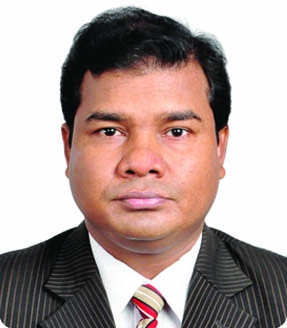Country to reach dev goals in time: Experts

The ongoing development process, and the successes already achieved in terms of improving lives and livelihood, have boosted people's confidence in the country's ability to meet the set targets for 2021 and 2041. Analysts opine that as almost all the social, human and economic indexes are in a positive trend, it will not be hard to attain the expected economic growth to emerge as a middle income country by 2021, and a developed country by 2041.
As per the estimate of BBS, the country's GDP growth in the present fiscal (FY19) is likely to go up to 8.13 per cent, which was 7.86 per cent in the past fiscal (FY18). Experts find that the continued GDP growth for the last few years is the outcome of a steady progress in the agriculture sector and food security, good growth in industry, the decline in the inflation rate to single digit, macroeconomic stability, the buildup of a comfortable foreign exchange reserve, achieving most of the MDG targets, and good progress in achieving the SDGs, which the country is diligently striving to meet ahead of the 2030 timeline.
According to BPDB, demand for electricity was 4,013 mw on March 31, 2019 and there was no load shedding. Total installed capacity rose to 18,242 mw in April 2019 from 17,965 mw in January 2019, but production remained low because of gas shortage and also because of the shutdown of some power stations for maintenance.
The country's merchandise export earnings in the first nine months of the current fiscal year (July-March of FY19) rose by 12.57 per cent to US$ 30.903 billion from US$ 27.452 billion in the corresponding period of the previous fiscal. Export earnings in these 9 months exceeded the strategic target (US$ 28.828 billion) by 7.20 per cent.
Bangladesh received US$ 11.869 billion in remittance in the 9-month period between July and March of FY19, increasing by 10.28 per cent from US$ 10.763 billion during the same period of FY18. However, remittances in the quarter under review also increased by 14.23 per cent to US$ 4.374 billion from US$3.829 billion.
Development partners disbursed US$ 4.080 billion in concessional loans and grants in July-February of FY19, which was 19.16 per cent higher than the amount disbursed (US$ 3.424 billion) in the corresponding period of FY18. The amount of aid inflow is slightly above one-half (54.4%) of the total target of US$7.5 billion for the entire fiscal year.
Meanwhile, experts blame the critical process and hurdles for access to finance as major barrier towards the expected rise of entrepreneurship and economic growth. President of Bangladesh Economic Association, (BEA), Prof. Dr Abul Barakat had recently stressed on turning the credit policy and monetary policy of Bangladesh Bank investment- friendly and suggested formulation of a time befitting revenue policy targeting to improve the investment climate.
The Department of Agricultural Extension (DAE) has set the target of domestic food grains (rice and wheat) production at 37.746 million metric tons (mmt) in FY19, which is 2.47 per cent higher than the FY18 target of 36.835 mmt. According to the latest monitoring report of DAE, areas under aman and aus have already exceeded their respective targets of 56.43 lakh hectares (ha) and 11.25 lakh hectares respectively. As on 9 April 2019, boro cultivation area reached 49.39 lakh hectares, which is 2.0 per cent higher.
According to a recent report, prepared by the United States Department of Agriculture (USDA), Bangladesh's poultry sector has a bright prospect. The sector is gearing up to export eggs and poultry meat by 2024, especially to the Middle Eastern countries, a big market for halal meat.
However, the Department of Livestock under the Ministry of Livestock and Fisheries claims that the country is already producing 15.52 billion eggs against the current annual demand of 17.13 billion. Fish production in the country increased by 58.85 per cent in the last ten years as a result of various programs taken by the government. Both public and private sectors have contributed to increasing the fish production in the country, which eventually is boosting economic progress and fulfilling domestic demand.
According to the Bangladesh Power Development Board (BPDB) the demand for electricity was 4,013 mw on 31 March 2019 and load shedding was zero. According to the Ministry of Power, Energy and Mineral Resources (MoPEMR), at present 92 per cent of the country's population has access to electricity. Government has now set the goal of providing electricity to all citizens by 2021 and to that end has initiated steps to generate 24,000 mw of energy by that year.




